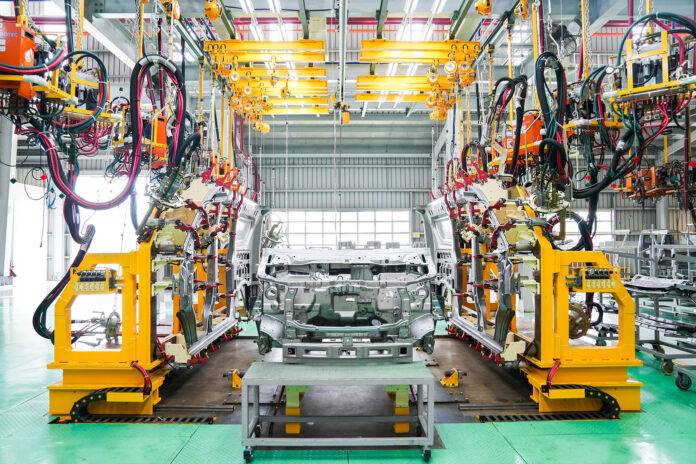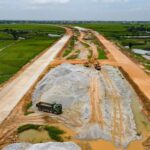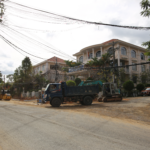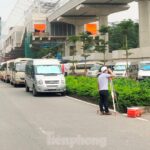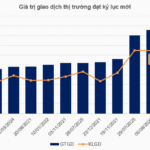Innovation 2.0: Vietnam’s Comprehensive Reform
Vietnam is undergoing a significant transformation, aptly termed “Innovation 2.0” by VinaCapital’s Head of Macroeconomic and Market Research, Michael Kokalari. This reform is shifting the country’s approach from “running and queuing” to a more streamlined and unified “straight lines, clear paths, and collective progress.”

Vietnam aims to develop 20 leading national enterprises.
According to Kokalari, the reforms primarily focus on four key pillars. These include Resolution 57 (science and technology), Resolution 59 (deeper integration into high-value global supply chains), Resolution 66 (eliminating overlapping regulations by 2025 and digitizing a transparent legal framework by 2030), and Resolution 68 (empowering the private sector as the most critical driver of the economy, targeting 2 million enterprises and at least 20 leading national conglomerates).
“Of the resolutions passed, Resolution 68 has garnered the most attention, partly due to the stock price increases of companies expected to benefit from government policies. The market anticipates the emergence of new beneficiaries as the government implements its strategy to boost private sector growth through Resolution 68,” Kokalari noted.
The private sector development strategy outlined in Resolution 68 adopts a two-pronged approach: fostering the growth of 20 “leading national enterprises” and vigorously promoting small and medium-sized enterprises.
Firstly, the government aims to double the number of small and medium-sized enterprises in Vietnam from 1 million to 2 million by 2030 by supporting the development of this sector and transforming individual business households into enterprises.
Secondly, the strategy emulates the Korean chaebol model, aiming to develop 20 large enterprises deeply integrated into global supply chains. This approach mirrors South Korea’s economic promotion policies of the 1970s.
In South Korea, enterprises in priority sectors enjoyed benefits such as preferential credit from state-owned banks, tax exemptions, market protection from foreign competition, and support in accessing international strategic partners.
While Vietnam’s government is also providing support to enterprises to boost economic growth and develop national infrastructure, it employs more indirect mechanisms compared to South Korea’s approach in the 1970s.
Significant Policy Initiatives
This year has seen a more than 40% increase in public investment disbursements. In June, the National Assembly passed a plan to reform the local government system, reducing the number of provinces and cities from 63 to 34. The streamlining of the government apparatus, effective July 1st, showcases the government’s rapid reform pace.

Several large-scale infrastructure projects are being actively implemented.
This month, Ho Chi Minh City introduced a pilot policy waiving construction permits for over 55,000 separate housing projects, requiring only a simple notification of construction to local authorities. This policy, along with recent proposals to amend the Land Law, aims to address the housing supply shortage and long-standing issues in the real estate market. Additionally, a Technology Steering Committee was established in July to promote technology development in key sectors.
“These measures are just a few examples of the series of reforms that began last year. Other notable initiatives include the $67 billion North-South High-Speed Railway project, expected to commence in 2027, and the government-led efforts since July to restart approximately 2,900 large-scale infrastructure projects that were stalled. Many other significant actions are also being implemented,” Kokalari added.
“Accountability of Leaders in Expediting Public Investment Capital Disbursement”
The 2025 capital investment plan encompasses an increase of 878,316.2 billion dong in the allocation of funds from both the Prime Minister’s plan and local balanced budgets.
Commencing the Laos Cai-Hanoi-Haiphong Railway Project in 2025
The Ministry of Transport has unveiled its ambitious investment plans for 2025, with a staggering 87 trillion VND earmarked for infrastructure development. Headlining these plans is the proposed Laos Cai-Hanoi-Haiphong high-speed railway, an unprecedented project boasting a total investment of 8.37 billion USD.
Unlocking the Power of PPPs: Harmonizing Interests and Sharing Risks for Mutual Success
It is believed by several National Assembly delegates that in order to unblock the “bottleneck” in infrastructure projects, especially in the field of transportation, it is necessary to devise harmonious solutions that balance the interests and risks of all involved parties when it comes to implementing investment projects through the public-private partnership (PPP) model.
The Capital’s Super Transport Projects: Unraveling the Delayed Disbursement and Budget Constraints
With a substantial budget of thousands of billions of dong allocated for construction, the priority is to expedite completion to alleviate traffic congestion. However, the disbursement for the expansion projects of National Highway 6, the extended Thang Long Boulevard expressway, and the Hoang Cau – Voi Phuc segment of Ring Road 1 is progressing slowly, resulting in delayed utilization of the allocated budget.

























